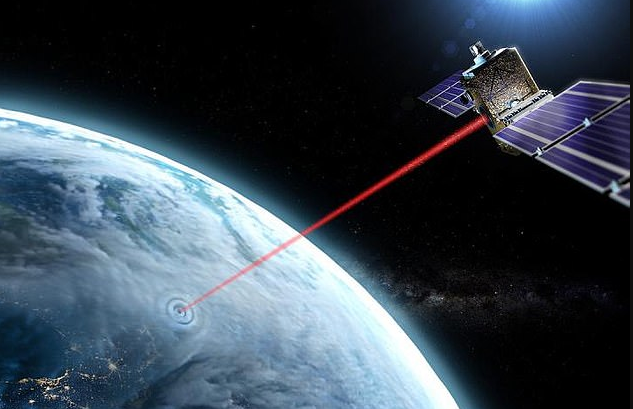Yes, Space Lasers.

We know. Controversial topic. Make your jokes now.
Upside Analysis
Using space lasers to seed clouds for firefighting purposes is an innovative idea that holds the potential for several significant benefits. While this concept may seem like science fiction, advancements in space technology and atmospheric science make it worth considering as a potential solution for combating wildfires. Below are key points explaining why using space lasers to seed clouds could be a good idea:
-
Precision Targeting: Space lasers can be precisely targeted to specific areas affected by wildfires. By accurately directing the laser's energy towards specific cloud formations, it becomes possible to stimulate cloud nucleation, encouraging the formation of raindrops. This precision targeting reduces the risk of wasting resources by focusing efforts only on the regions where rainfall is most needed to suppress the fires.
-
Large Coverage Area: Satellites equipped with space lasers can cover vast areas of land, often inaccessible or challenging to reach by traditional firefighting methods. This capacity for extensive coverage enables a more comprehensive approach to firefighting and can help tackle wildfires across remote or difficult-to-reach locations more effectively.
-
Climate-Resilient Approach: As wildfires become more frequent and severe due to climate change, traditional firefighting methods may prove insufficient. Space lasers offer a climate-resilient approach to firefighting that doesn't rely solely on local weather conditions. By actively stimulating cloud formation and rainfall, we can potentially increase the chances of dousing wildfires, even in regions experiencing prolonged droughts.
-
Rapid Response Time: Space-based systems can be activated quickly and provide a rapid response to wildfires. Unlike terrestrial-based methods, which may require time to mobilize resources and deploy aircraft, space lasers can be activated promptly to initiate cloud seeding operations, thus mitigating the spread of wildfires sooner.
-
Reduced Environmental Impact: Compared to some conventional cloud seeding methods, space lasers have the potential to be more environmentally friendly. They do not involve the release of chemicals into the atmosphere, which can have unintended ecological consequences. Additionally, the laser's energy can be precisely controlled, reducing the risk of collateral damage to the environment.
-
Multi-Purpose Use: Space lasers equipped for cloud seeding can have additional applications beyond firefighting. They could be employed to enhance agricultural productivity by inducing rainfall in drought-prone regions, replenishing water reservoirs, and supporting overall water resource management.
-
International Collaboration: Wildfires often transcend national boundaries, making firefighting a global challenge. Using space-based technology, like lasers for cloud seeding, could encourage international collaboration and mutual assistance during wildfire emergencies. Nations could work together to deploy satellites and coordinate efforts to combat wildfires on a larger scale.
While the concept of using space lasers to seed clouds for firefighting has exciting potential, it is crucial to acknowledge that this idea is still in the realm of theoretical speculation. Practical implementation would require extensive research, testing, and investment in space technology and atmospheric science. It is essential to consider the ethical, safety, and regulatory aspects of such an approach before considering it as a viable solution for combating wildfires. Nonetheless, exploring innovative ideas like this may pave the way for new technologies and strategies to protect our environment and communities from the devastating impact of wildfires.